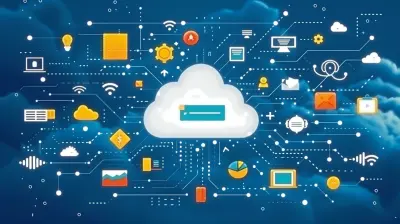How Online Simulations are Enhancing Learning in Science and Math
5 August 2025
Let’s face it—science and math can be tough nuts to crack. We've all stared at a complex equation or confusing lab manual at some point and thought, “How in the world does this work?” Well, imagine turning all that complexity into something you can actually interact with—something visual, hands-on, and even fun. That’s exactly what online simulations are doing for millions of learners around the globe. They’re not just digital bells and whistles; they’re game-changers in the classroom and beyond.
Welcome to the exciting world where digital meets practical—where students click, drag, drop, and experiment their way to understanding. This isn’t your average PowerPoint lecture. This is learning on steroids.

The Shift from Passive to Active Learning
Gone are the days when learning was just about memorizing formulas or facts from heavy textbooks. Today, education is moving toward a more interactive approach. And online simulations? They're the front-runners in this shift.Instead of being passive observers, students get to become active participants. They can tweak variables in real-time, watch dynamic outcomes, and repeat experiments without needing a physical lab or expensive equipment. It’s like stepping into a digital playground filled with science and math puzzles waiting to be solved.
Think of it like a flight simulator for pilots—but for students. You wouldn’t want a pilot learning solely from a textbook before flying a plane, right? Same principle here.

What Exactly Are Online Simulations?
Before diving deeper, let’s clear the air—what even is an online simulation?In plain terms, it's a virtual model that mimics real-world systems or processes. These web-based tools allow students to interact with scenarios that would be difficult, dangerous, or impossible to replicate in a traditional classroom. From simulating chemical reactions to exploring the motion of planets, online simulations bring complex ideas to life.
Most of these simulations are powered by interactive graphics, user-friendly interfaces, and often use game-like elements to keep things engaging. Some well-known platforms? Think PhET Interactive Simulations, Gizmos by ExploreLearning, and Concord Consortium.

Why Science and Math? Why Not Other Subjects?
Glad you asked! Science and math, by their nature, are deeply conceptual. We're often dealing with things we can't see—atoms, waves, forces, equations, and calculations that happen behind the scenes.Online simulations help pull back the curtain. They visualize these invisible processes and give students a sandbox to play, test, and truly understand what’s happening.
Try explaining Newton’s laws with just words. Now imagine letting the student apply a force to a virtual object and see it move accordingly. The difference? Night and day.

Benefits of Online Simulations in Science and Math Education
1. Visualizing the Abstract
Science and math are full of abstract concepts. Take quantum mechanics, for instance, or vector fields in calculus. These are topics that often leave students scratching their heads.With simulations, these abstract ideas get a visual makeover. Want to see how electrons behave in a magnetic field? Or how a parabolic motion trajectory works? Simulations make the invisible visible—and suddenly, everything makes more sense.
2. Instant Feedback and Self-Paced Learning
Another huge win? Instant feedback. When students change a variable or input a wrong value, they see what happens right away. This makes learning more intuitive and less intimidating.And here's the cherry on top—it’s self-paced. No pressure to keep up with the fastest kid in class. Students can pause, rewind, and try again. It’s learning on their terms.
3. Safe Space for Mistakes
Nobody likes messing up in front of an audience. But messing up is part of learning, especially in science and math.Simulations provide a judgment-free zone. Blow up a chemical solution in a virtual lab? That’s okay—try again. It's cost-free, risk-free, and stress-free.
4. Better Engagement and Reduced Anxiety
Let’s not beat around the bush—many students dread science and math. But insert an interactive simulation into the mix, and suddenly, curiosity is piqued.They feel more like games than lessons. And when students are engaged, their anxiety levels drop and retention soars. It’s a win-win.
5. Accessibility and Inclusivity
With online simulations, the laboratory isn’t limited to those in proximity to high-budget schools or institutions. These tools break down barriers—geographic, economic, and even physical.Students in remote areas? Check. Students with disabilities? Check. All they need is an internet connection and a device, and the whole universe of science and math opens up.
Real-World Applications That Click
Alright, let’s get a bit more real. Here are a few practical scenarios where simulations are making a difference every day:- Physics: Simulate motion, gravity, friction, and forces. Adjust mass or acceleration and see Newton’s Second Law unfold right before your eyes.
- Chemistry: Mix virtual chemicals, observe reactions, and learn about molecular structures—without any toxic spills.
- Biology: Explore the human body, cell structures, or ecosystems, and watch how organisms interact.
- Mathematics: Visualize functions, integrals, and probability distributions. Use sliders to see how changes in equations affect graphs in real-time.
These examples are just the tip of the iceberg. What matters is that students stop being watchers and start being doers.
Teachers Are Embracing the Change
It’s not just students who benefit. Teachers get to use these tools to breathe life into topics that are otherwise dry or complex.Simulations offer flexibility in lesson planning, allow for differentiated instruction, and even support flipped classroom models where students explore simulations at home and discuss findings in class.
Plus, with analytics and data tracking, many platforms provide insights into student performance, helping teachers tailor their instruction better.
Challenges and Limitations
Let’s be honest—it’s not all sunshine and rainbows.1. Tech Access and Digital Divide
Not every student has access to a reliable device or internet connection. This remains one of the biggest hurdles in leveraging simulations on a wide scale.2. Over-Reliance on Visual Learning
While visuals are great, not all students learn best this way. Some may struggle to grasp concepts without traditional instruction or hands-on experience.3. Quality Control
Not all simulations are created equal. Some tools can be overly simplistic or, worse, inaccurate. It’s essential for educators to vet and choose reliable, pedagogically sound resources.That said, the pros outweigh the cons when integrated thoughtfully.
The Future of Learning is Simulated—and Real
We're heading into an era where education is not limited by four walls or fixed schedules. Online simulations are a huge part of this transformation. As technology gets more advanced—think VR, AR, and AI—the possibilities for interactive learning are virtually endless (pun totally intended).Imagine donning a VR headset and walking through the human bloodstream or flying through a mathematical graph in 3D space. That’s not sci-fi anymore—it’s soon-to-be reality.
How to Get Started
Want to dive in?Here are a few beginner-friendly platforms to check out:
- PhET Interactive Simulations – Developed by the University of Colorado Boulder. Free, easy to use, and covers a wide range of topics.
- Gizmos (ExploreLearning) – Offers over 400 math and science simulations.
- Concord Consortium – Great for both secondary and higher education levels.
Tip: Start small. Pick one concept that students struggle with, find a simulation, and integrate it into your lesson. The results will speak for themselves.
Final Thoughts
Learning isn’t just about consuming information—it’s about interaction and experience. Online simulations offer a rare combination of engagement, understanding, and accessibility. They make science and math not only digestible but also enjoyable.Whether you're a student finally “getting” what acceleration really means, or a teacher watching light bulbs go off in your classroom—these tools are enhancing education in ways that weren’t possible just a decade ago.
So, the next time you're faced with a complex topic, maybe skip the textbook for a moment. Fire up a simulation, roll up your virtual sleeves, and start experimenting. Because when learning feels like play, that's when the real magic happens.
all images in this post were generated using AI tools
Category:
Innovation In EducationAuthor:

Olivia Lewis
Discussion
rate this article
1 comments
Elias Jordan
Online simulations are transforming the way we learn science and math! They make complex concepts more accessible, engaging, and fun. Embrace this innovative approach to education, as it empowers students to explore, experiment, and discover in a dynamic environment. The future of learning is bright!
August 19, 2025 at 4:49 AM

Olivia Lewis
Thank you for your insightful comment! I completely agree that online simulations are revolutionizing education by making challenging concepts more engaging and accessible for students.


